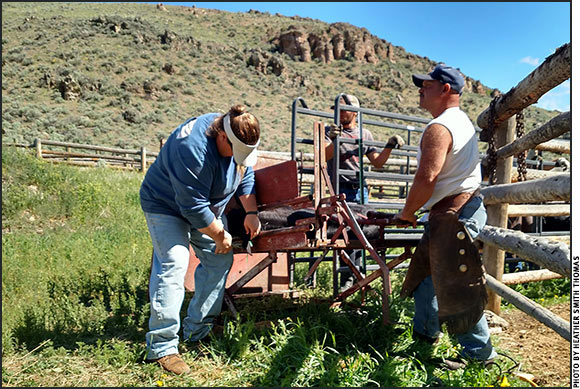
Vaccinating Calves
Institute a calf vaccination program that supports your situation.
Colostrum provides newborn calves temporary immunity from disease via maternal antibodies. After a few weeks, calves must start building their own immunities. Vaccinating calves at the proper time can help. Vaccinating too soon, however, may not stimulate immune response. If the calf still has maternal antibodies in its system, these may interfere with building its own immunities.
Many producers simply vaccinate calves at branding or at some point before weaning, says David Smith, veterinarian at Mississippi State University. “What most people are doing with calfhood vaccines is to stimulate immunity to protect calves at weaning time.”
Also, it’s standard practice to vaccinate against clostridial diseases such as blackleg, malignant edema, redwater, gut infections caused by Clostridia perfringens, etc., because these deadly diseases may be a risk to calves at any age.
“Clostridial diseases like enterotoxemia (caused by several different types of C. perfringens) can affect young calves that are still nursing their mothers. Each producer needs to figure out a vaccination program to protect against the diseases that affect calves on that particular ranch,” says Smith.
For respiratory disease, we’re still not sure about optimal age for vaccination since calves in some herds may experience “summer pneumonia” before weaning, says Smith. He advises producers to work with their herd health veterinarian to determine a vaccine strategy. He adds that vaccination is just one strategy for preventing illness.
“Management practices are usually more important than vaccines, such as making sure all calves get timely and adequate colostrum at birth. Also, avoid introducing any new cattle (and possible new pathogens) when calves are young and susceptible, and minimize opportunities for calves to share pathogens,” says Smith. You don’t want young calves in the same pastures with older calves that may spread scours to the younger ones.
Clostridial diseases are difficult or impossible to address with management, however, since those pathogens are ever-present in the environment. For these infections, vaccination is crucial to protect the calves. “The clostridial vaccines, being toxoids, are very effective,” Smith says.
The only problem would be if you are fighting an enterotoxemia in calves that is caused by a different type of C. perfringens not covered in the typical seven-way, eight-way or enterotoxemia vaccine. These vaccines only contain types C & D, yet some intestinal disease in calves may be caused by types A or B. If this happens, you need to work with your veterinarian to figure it out. Some herds have successfully utilized a type A vaccine or an autogenous vaccine created from samples obtained from their own calves. No two ranches have the exact same situation, so it pays to consult with your veterinarian.

Editor’s Note: Heather Smith Thomas is a freelance writer and cattlewoman from Salmon, Idaho.






